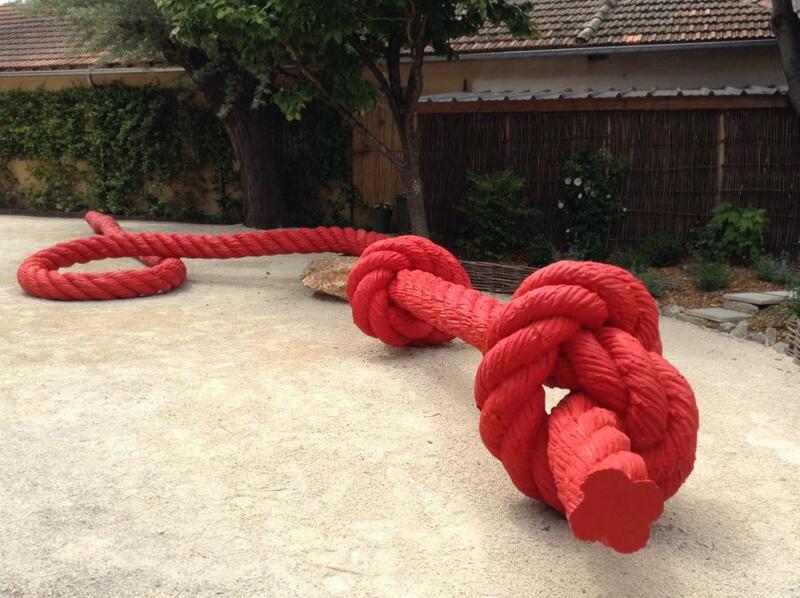TISSAGE-TRESSAGE AT VILLA DARTIS FOUNDATION
Since immemorial times, the thread has fascinated and inspired artists and poets, and mythology has developed incessantly its mysteries: The Ariadne thread, the Moebius ribbon ...

If during various centuries the upholstery was considered as decorative, in the 20th century, the situation changes and textile art bursts modern and contemporary creation, as Tissage-Tressage reveals in the Villa Datris Foundation. The exhibition explores the different modes of expression of contemporary sculpture through textile art, weaving and braiding, intertwining themes from intimacy to the organic, going through politics and ecology.
It gathers Works, whose great diversity provide a broad description of the textiles´ new use made by artists. Some, take up ancient practices or collaborate with manufacturers or artisans, while others have an intuitive approach braiding or weaving by themselves; either through natural materials or industrial products such as silk, wool, cotton, rope, horsehair, wicker, liana or even metal. Tangled threads until oppression and torn fabrics constitute strange and disturbing objects, between rites and magic, fetishes and amulets, are a pure revelation of the unconscious; as Erenesto Neto´s tiny webs or Joana Vasconcelos´ kitschy and colorful humor. Contemporary art reconnects with the oldest traditions, and more importantly, participates in their transmissions.
In the current landscape, several trends can be observed, both in the feminine as in the masculine: as a symbol of an identity search, through costume (Nick Cave, Pascale Marthine-Tayou, Meschac Gaba) art brut´s influence and mystic act (Judith Scot, Cathryn Boch, Manish Nai), the animism in search of a new world order (Maria Nepomuceno), the organic thread (Josep Grau-Garriga, Agnès Sebyleau), the return to tradition and the praise of the slowdown (Claude Viallat, Judy Tadman y Phyllida Barlow) and sexuality in its precarious harshness (Sonia Gomes). Weaving, braiding, is a singular action that combines several elements to give rise to a crossing, to a miscegenation, to the elaboration of an unexpected work that follows the thread of inspiration, from the primitive to the tribal, to the most contemporary expressions.
The space configuration is particularly successful and takes the form of a fascinating roaming, where never, the visitor's eye does not know where to sit. The Villa´s gardens allow artists to give rein release to their imagination by offering an animated topography of groves and exuberant vegetation, associated with the murmur of the Sorgue waters. The art of braiding becomes monumental there, with Mireille Fulpius´ (Funny trama) interlacing of bamboo slats, with Antonella Zazzera´s (Armonico LXXXV) imposing copper wire curtain or with Rodrigo Matheus´ (TBC) net; mesh to infinity that covers and conceals the exterior lift of the villa, shudders in the wind drawing a calligraphy that disturbs the viewer's senses in a subtle relationship with the environment.
Re discovering intuitively these techniques and these immemorial gestures, contemporary artists, open a new horizon to the sculpture now a day, creating an unprecedented and sensual approach to matter, fibers or threads, crossed and assembled, to the rhythm of another temporality.




